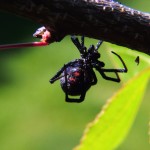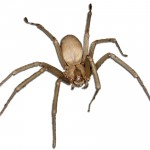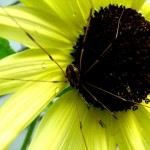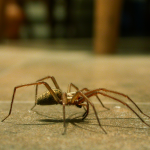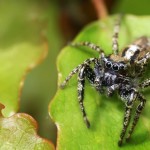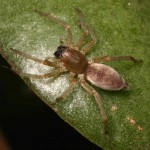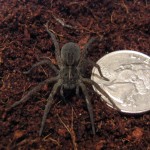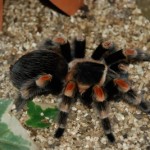 In general, spiders are beneficial because they prey upon insects. Therefore spiders provide natural pest control. Sometimes spiders, particularly spider webs, can become a nuisance causing the need for pest control. There are steps that a homeowner or building owner can take to help reduce the amount of spiders on the property.
In general, spiders are beneficial because they prey upon insects. Therefore spiders provide natural pest control. Sometimes spiders, particularly spider webs, can become a nuisance causing the need for pest control. There are steps that a homeowner or building owner can take to help reduce the amount of spiders on the property.
- Thorough and routine house keeping & maintenance is the best way to keep spiders under control. Be sure to regularly remove spiders, webs, and egg sacs using your vacuum or a broom.
- As with most pest control techniques, keeping areas clutter-free will help prevent spider infestations.
- Keep the perimeter of your foundation clear from debris and overgrowth. Regularly clean around windows, doors, shutters and other areas that are inviting to spiders.
- Prevent spiders and other insects from entering your home by ensuring all screens and doors are sealed tight.
Pest Control Spiders – Professional Treatment
In cases where spider population cannot be controlled, professional pest control for spiders is sometimes needed. Titanium Laboratories can help you control spiders on your property fast with safe and effective pest control treatments. Contact us today for a free quote.
Spider Biology
There are more than 35,000 species of spiders on the planet. North America is home to about 3,000 spiders. Of the 3,000 spiders on our continent, only two present a danger to humans. They are the black widow spider and brown recluse spider. In general, female spiders may lay anywhere between 20 and hundreds of eggs in each sac. Each species produces different amounts of egg sacs. Most species of spiders live for 1-2 years, but a few can live as long as 20 years.
Natural predators, spiders inject venom into their prey when they bite. This venom paralyzes and/or kills their prey. By injecting a predigestive fluid into their prey, spiders feed by sucking on the digested liquid. If food is scarce, a spider can survive for up to a few months without feeding.
As nocturnal beings, spiders are most active at night. In daytime, you may find spiders lurking in cracks and crevices or in their webs. Most often, a spider will not attempt to bite unless provoked through rough handling. Moreover, most spiders’ fangs are not capable of breaking through human skin. The few species of spiders that are able to bite human beings usually cause a minor reaction. Most spider bites result in a small area of swelling on the skin. Of course, the black widow spider is an exception and can deliver a bite that is known to be quite serious.
Common Spider Species
Black Widow Spider
Length: Appx 1/2″ (with legs 1 1/2″)
Shape: Spherical abdomen
Color: Usually black (sometimes brownish-black) with a reddish hourglass marking (Signature marking may simetimes have a space in the center creating a “split-hourglass” marking.)
Location: Outside in protected areas such as under rock/wood, such as firewood piles or in rotted tree stumps. They prefer dry wooden structures such as barns and sheds. Indoors locations include garages, basements, and crawl spaces.
Known for: The black widow spider is notorious for the female’s poisonous bite, causing almost immediate pain, increased body temperature, blood pressure, intense perspiration and nausea. The bite is treatable through an antitoxin and is rarely fatal in human adults when treated. If a bite occurs, contact a physician immediately or go directly to the emergency room, and, if possible, bring the spider for identification. (Go to: pest control spiders)
Brown Recluse Spider
Length: Adults are appx. 1/4″ to 1/2″
Color: Tan – dark brown with a darker shaded fiddle-shaped marking
Other distinguishing feature(s): 6 eyes: 3 groups of 2 eyes arranged in a semicircle
Location: Outside the brown recluse spider can be found around piles of items such as boxes or woodpiles, and around rocks. Infestations have been found to exist around cedar shake roofing. Inside, they are found in quiet, undisturbed areas. Examples include inside storage boxes, around storage areas, underneath furniture and in cracks and crevices. This species also prefers boiler rooms, attics, basements and storage areas inside commercial facilities.
Known for: The brown recluse spider is considered to deliver a serious bite to humans, resulting in an open sore. Sometimes, no sensation occurs at the time of the bite and intense pain may be felt as long as 6 to 8 hours afterwards. Usually the bite will result in a small blister and the affected area of skin may become swollen. Symptoms from a brown recluse spider bite may include fever and restlessness. This particular spider bite produces necrosis (dead tissue), that gradually sloughs away after a week or two. The loss of tissue may expose underlying muscle and/or bone. Healing from a brown recluse spider bite can take several weeks and leave behind severe scar tissue. If you believe you have been bitten by a brown recluse spider, we recommend that you seek medical assistance without delay. If possible, bring the spider with you for a positive identification. (Go to: pest control spiders)
Cellar Spider / Daddylonglegs
Length: 1/16″ to 5/16″ body with very long thin legs
Color: Light brown to light gray, sometimes a pale shade of yellow
Distinguishing feature: The cellar spider and daddylonglegs spiders have a small body with very long skinny legs
Location: Cellar spiders and daddylonglegs prefer damp dark places including basements and crawl spaces. They are also commonly found in corners of garages and sheds, warehouses, and inside dark damp places such as under cabinets.
Known for: The cellar spider / daddylonglegs is a harmless spider but can become a pest requiring pest control. (Go to: pest control spiders) Lowering relative humidity can help prevent infestations and/or lessen populations.
House Spider
Also referred to as the “American House Spider” and the “Domestic Spider”
Length: About 1/8″ to 5/16″ body including abdomen
Color: Varies
Location: The house spider will build a web, and if it does not successfully catch prey, the house spider will bandon it and move to a new site. House spiders prefer to build webs in areas where the relative humidity is higher and the insect population is higher, thus providing it a more abundant food source. Indoors, house spiders are commonly found in corners of ceilings, beneath furniture, in storage areas, basements, and garages.
Known for: This is the most common indoor spider in the United States. They quickly build multiple webs and therefore can become a nuisance indoors, causing a need for pest control. (Go to: pest control spiders)
Jumping Spider
Length: 1/8: to 3/4″
Color: Usually black but can also be brown, gray, or tan. Typically has pale markings in gray, white, yellow, blue/green, and/or red.
Distinguishing Feature: “Compact” body type. As the name indicates, this species of spider jumps. Usually when hunting prey, they will pounce about 1″, but when threatened, jumping spiders can jump 20 times their body length.
Location: Jumping spiders are found to be most active at daytime, and appear to be attracted to sunlight. You will find their web, and possibly the inhabitant under furniture, in between drapery pleats, in cracks and crevices, around moldings, and tucked in between books on shelves. You can usually find them hunting around windows and doors inside, and outdoors around bushes, fences, and around the perimeter of building structures.
Known for: A jumping spider is most noted for its jumping ability. Althought generally considered to be harmless, jumping spiders can become a nuisance pest, causing the need for pest control. (Go to: pest control spiders)
Sac Spider
Length: 1/8″ to 3/8″
Color: Typically pale yellow or pale green. Brown palp tips. Legs and abdominal midline darker.
Distinguishing feature: It is believed that this species of spider is responsible for many indoor spider bites. Cases are not always reported, however.
Location: Most make their way indoors in autumn, when temperatures begin cool down and food supply becomes scarce. Indoors, they prefer upper corners of ceilings/walls and basements. They may be seen traveling across walls and ceilings at night. When disturbed, they drop to the floor and find a hiding place. OUtside, sac spiders ay be find underneath stones, in firewood piles, and around debris. They can also be found in sheds and garages, under eaves, behind shutters, or anywhere that provides shelter.
Known for: Sac spiders are known for their venomous bites. Some victims do not feel a sac spider bite, but others report a sharp pain. Usually, the bite will leave behind an area of redness, swelling, and a burning sensation that typically lasts for about 1 to 2 days. In severe cases, the burning can last up to 6o minutes followed by tenderness for up to 3 days. The affected area can sometimes enlarge due to the filling of puss. It is rare but possible for the victim of a sac spider bite to feel “ill”, with symptoms including stomach cramps, nausea, fever, and general malaise. The area of the bite sometimes ulcerates, crusts over, evenutally healing in about a couple of weeks. Following a sac spider bite, cleanse the area with hydrogen peroxide. Apply a cold ice pac to assist in reducing the swelling and pain. If more serious symptoms develop, it is best to seek medical assistance. Bring the spider with you for identification, if possible.
Due to the sac spider’s ability to deliver a painful bite, it is an unwelcome guest in most homes and presents a cause for pest control. (Go to: pest control spiders)
Wolf Spider
Length: 1/4″ to 3/4″
Color: Typically dark brown with lighter stripes / markings. Less frequently yellow with dark brown stripes/markings.
Distinguishing feature: Hairy abdomen. Long spiny legs. Wolf spiders are known to be big, hairy, and fast moving.
Location: Normally they stay outdoors, and find their way indoors in search of prey. Once inside, however, they typically will not leave and will remain around floor level. You can usually find wolf spiders along walls and beneath furniture.
Known for: Wolf spiders cause a reaction in many people because they are large, hairy, and quick. Thus, they are considered to be a nuisance spider and may be cause for professional pest control. (Go to: pest control spiders)
Tarantula
Length: 1 9/16″ to 7/8″ with a leg span up to 5″
Color: Dark brown/blackish, can also be tan to yellowish brown or reddish brown.
Distinguishing feature: A tarantula is a very large and hairy spider.
Location: Tarantulas are not normally found in the Northeast part of the United States, and usually are found as a result of being transported. They are sometimes kept as pets.
Known for: Due to their imposing size and dense dark hair, tarantulas tend to scare many people. The truth is, tarantulas are quite docile. They have the ability to bite and will generally do so only when provoked. They have the ability to live up to 2 years without a meal and when found indoors, they have usually been transported either from another location or a pet shop. Tarantulas are not considered to be a nuisance pest in this area of the country and therefore do not normally cause a need for professional pest control.
Yesteryear’s Service. Tomorrow’s Technology. Call Titanium Today!

